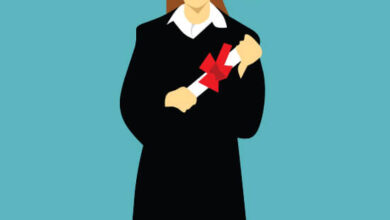Difference Between Pressure Group and Political Party(With Table)
Have you ever wondered what the difference between a pressure group and a political party is? Or why do they both exist in politics? In this article, I’ll be discussing the differences between these two groups, as well as providing a table to allow readers to easily compare and contrast the different features of each. So if you’re looking for a better understanding of pressure groups and political parties, read out the following blog!
You Can Also Read: Difference Between VAT and GST
What is a Pressure Group?
Pressure groups are organized interest groups that seek to influence public policy. They play an important role in the political process by bringing together like-minded people to advocate for a common cause.
There are many different types of pressure groups, each with its own goals and methods of operation. Some pressure groups seek to influence the government through lobbying and public relations campaigns, while others use more direct methods such as protests and civil disobedience.
Pressure groups can be found on both sides of the political spectrum, advocating for causes as varied as environmental protection, gun control, and religious freedom. No matter their mission, all pressure groups share one goal: to exert influence over the government in order to promote their own agenda.
Five Features of Pressure Group
- A pressure group is a social or political organization that seeks to influence government policy or legislation.
- Pressure groups often use lobbying and other tactics to try to sway the decisions of government officials or politicians.
- Pressure groups may be organized around a specific issue or cause, such as the environment, human rights, women empowerment, animal welfare, etc.
- Pressure groups may be informal or formal, with the latter often having a more structured organizational structure and leadership.
- Pressure groups may use a variety of tactics to achieve their goals, including public demonstrations, media campaigns, and legal challenges.
What is a Political Party?
A political party is a group of people who share the same views on certain issues and come together to form a government. They campaign for their chosen candidate in an election and try to get as many people to vote for them as possible.
Moreover, political parties are also responsible for creating and implementing policy, legislation, and other initiatives. They often have national headquarters where they coordinate their activities and review the performance of their elected representatives. In some countries, political parties are required to register with a government body in order to be recognized as an official party.
The political parties that win the most seats in an election are given the responsibility of forming a government and leading the country. They will usually name a prime minister or president as their leader, who is responsible for representing the party’s views and carrying out its policies.
Five Features of a Political Party
- A political party is a well-organized group of people who band together to run for office and hold power in government.
- Secondly, political parties generally have a set of principles or ideologies that guide their policies and actions.
- Political parties often have a hierarchy or organizational structure, with a leadership group at the top and rank-and-file members below.
- Political parties may have affiliated organizations, such as labor unions or youth wings, which support their activities and goals.
- Finally, political parties often seek to recruit and support candidates for public office and may have a process for selecting their candidates and promoting their campaigns.
You Can Also Read: Difference Between Shareholder and Stakeholder
Pressure Group Vs Political Party(Comparison Table)
The following table shows the exact comparison between pressure and political party.

Key Differences Between Pressure Group and Political Party
- A pressure group is an organized interest group that does not put up candidates for election, whereas a political party is an organized group that does so.
- The main aim of a pressure group is to influence government policy. On the other hand, the main aim of a political party is to win elections and form the government.
- Pressure groups tend to be single-issue orientated. In contrast, political parties have a wider range of policies.
- Pressure groups are usually smaller than political parties.
- Membership in a pressure group is voluntary. On the other hand, membership in a political party is often compulsory for those who wish to stand as candidates in elections.
Conclusion
So in conclusion, we can say that there are some key differences between a pressure group and a political party. Pressure groups tend to be more informal than parties, do not stand in elections, and are less likely to have an ideological agenda or aim for power. On the other hand, political parties compete in elections and often strive for governmental control with the intention of implementing their own policy agenda. Both play important roles in society but serve different purposes.
Reference Site:




One Comment